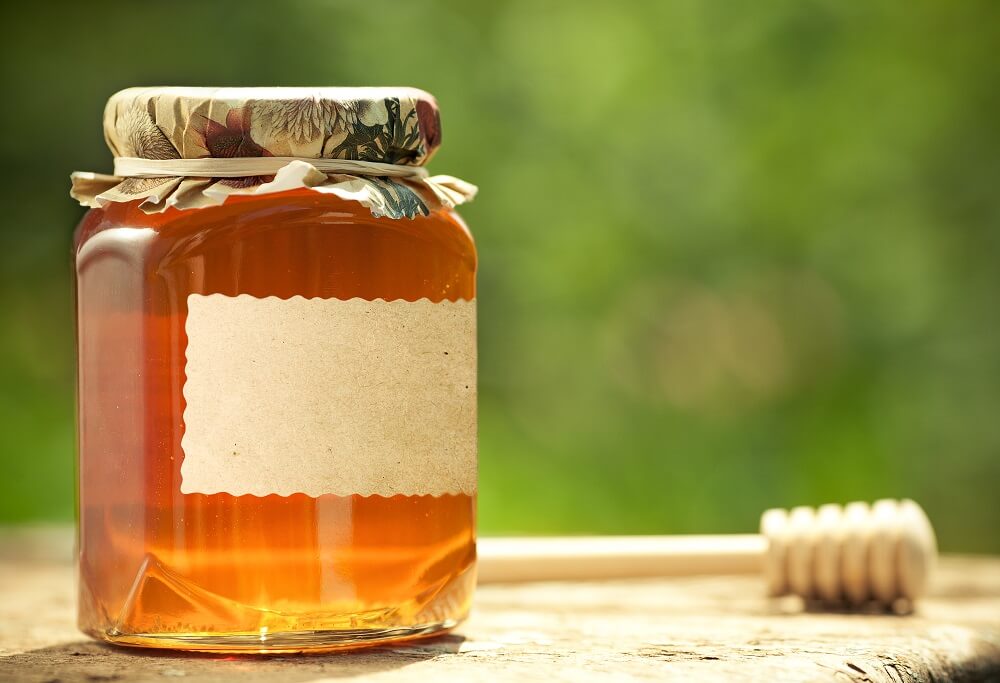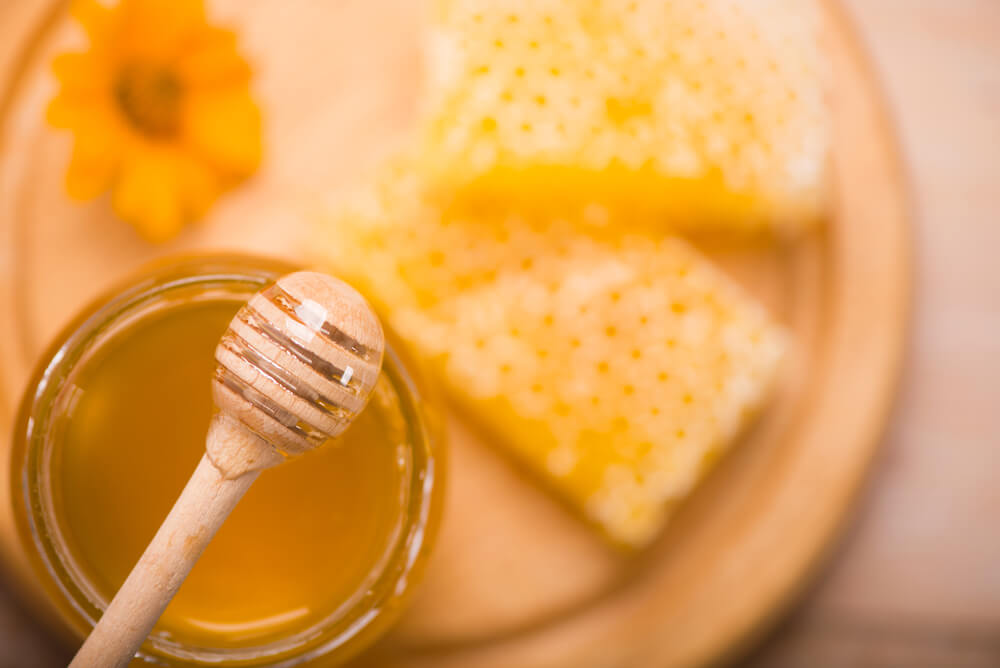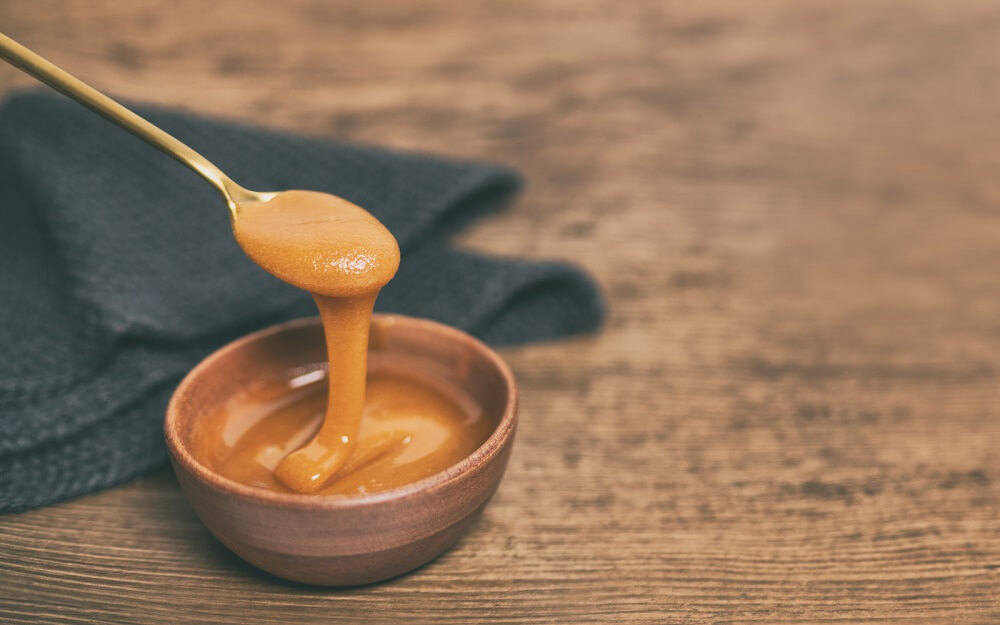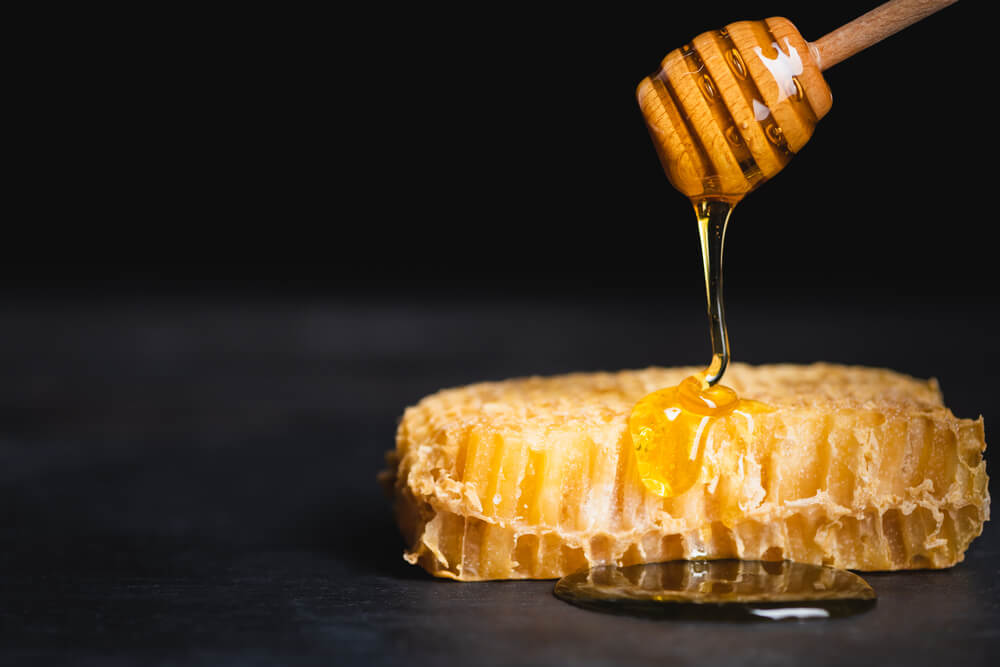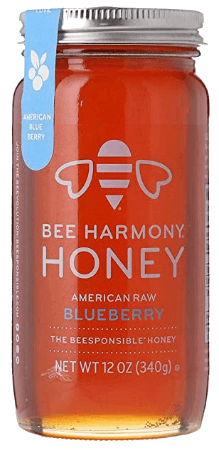Table of Contents:
How to Store Honey

Let’s start with a surprising truth, shall we?
When stored properly, honey is one of the only foods that never expires.
In fact, archeologists found 3,000-year-old honey in King Tut’s Egyptian tomb. The archaeologists bravely tasted it, and to their amazement, it was still perfectly good honey.(1)
But it gets better:
In 2012, archeologists discovered 5,500-year-old honey from the country of Georgia.(2)
The ancient Egyptians and Georgians cherished honey so much that they’d bury jars of it with deceased royalty. This way, the royals would have a sweet transition into the afterlife.
Honey’s long shelf-life is thanks to its unique features:
It’s low in water and high in sugar, so harmful bacteria don’t thrive in it. Honey also contains hydrogen peroxide, which helps stop the growth of microbes.(3, 4)
So how do you store honey?
Follow these three steps:
Step 1: Store Your Honey in an Airtight Container

Always keep your honey in an airtight container so the honey’s hygroscopic (water-loving) sugars can’t absorb moisture from the air. Excess moisture leads to the growth of undesirable yeasts.
You can store your honey in the container it came in, as long as it’s sealed tightly.
That said, the best honey containers are usually made of glass and have to be twisted shut.
Step 2: Store Your Honey at Room Temperature
Word to the wise:
Honey doesn’t need to be stored in the refrigerator.
But I’ve done that. You’ve done that. We’ve all known someone who’s done that.
That said, storing honey in the refrigerator isn’t necessary. Honey fares better when kept somewhere relatively warm (65-75°F) and dark.
Why?
Because honey crystallizes at temperatures below 50ºF (10ºC). Crystallization occurs when honey transitions from liquid form to solid form. It develops a gritty texture with thick ‘crystals,’ hence why it’s called crystallization.

But don’t worry.
Crystallized honey is still perfectly good honey. It’s a natural process that all honey goes through eventually, regardless of where you store it. But you can slow down the crystallization process by keeping your honey at room temperature.
You can also learn how to decrystallize honey. Decrystallizing honey allows you to put it back into liquid form, so you can easily spread or pour it again.
Step 3: Use Clean Utensils When Dipping into Your Honey
You don’t want to introduce any bacteria into the honey.
Plus, you could accidentally introduce excess moisture into honey through double-dipping. For example, if you dip your spoon into tea or coffee and then dip it back into your honey jar, this adds moisture to your honey.
Why is this important?
Because too much extra moisture can cause your honey to ferment, giving it a sharp or acidic taste.
Generally, honey has a moisture content of around 17-18%. But if honey is over 18% in moisture content, it’ll ferment over time.

How do I Prevent Crystallization When Storing Honey?
The short answer?
You can’t.
Crystallization is a natural process that honey undergoes over time. It’ll happen no matter where you store your honey (in your pantry, fridge, or freezer). You can, however, slow down the rate of crystallization by following the steps above.
And thankfully?
If your honey crystallizes before you finish eating it, you can easily decrystallize it in 3 steps.
Keep in mind:
Some types of honey don’t crystallize as quickly as others.
The rate at which honey crystallizes depends on the nectar the bees use to make the honey. Flower nectars with higher levels of glucose than fructose will crystallize much faster.
For instance, clover and alfalfa honey crystallize quickly. In contrast, blackberry, maple, and tupelo honey crystallize slowly.

And I won’t sugarcoat it:
Some people prefer crystallized honey over liquid honey. The texture pairs nicely with granola, yogurt, or oatmeal. The flavor or quality of the honey doesn’t change once it’s crystallized, either.
It’s also nice to chew on crystallized honey since it’s slightly gritty.
Also, it’s worth mentioning that crystallized honey can be a sign of good quality, natural honey.
For example, honey bought at the grocery store isn’t always pure honey. Manufacturers often mix it with other sweeteners such as sugar or high fructose corn syrup to cut costs.
As a result?
It’s no longer considered real honey and won’t crystallize like natural honey. So when you’re buying honey, make sure you see the words ‘raw’ and ‘unfiltered’ on the label. That’s how you know it’s authentic.
Can I Store Honey in the Fridge?

Yes, if you prefer crystallized honey, you can store honey in your fridge.
But remember:
Honey doesn’t expire when stored properly. So there is no need to store your honey in the fridge or freezer to maintain its shelf-life. Storing honey in cooler temperatures will only cause it to solidify (crystallize).
The crystallization process of honey is expedited once temperatures drop below 50ºF (10ºC). The ideal refrigerator temperature is 40ºF (4.4ºC), so honey placed in the fridge will start solidifying within a few days.
But is this a bad thing?
Not at all.
As mentioned, crystallized honey is still safe to eat. The only difference is the texture – it’s gone from a liquid to a solid form. Many people prefer crystallized honey on granola, yogurt, or ice cream.
The gritty texture of crystallized honey can add something extra to it. Mind you, the flavor remains the same. But the solid texture has an appeal that many people enjoy.
FAQs about Storing Honey
- How can you tell if honey is spoiled?
- Do you need to sterilize jars for honey?
- What’s the best container to store honey?
- How many years can honey be stored?
- Is it OK to store honey in the fridge?
- How do I store honeycomb?
- How do you store honey so it doesn’t crystallize?
- How long does raw honey last after opening?
- What happens if you put honey in the freezer?
How can you tell if honey is spoiled?
Remember, if you store your honey correctly, it’ll never spoil or expire.
That said, if you’re not storing honey in an airtight container, then it can allow excess moisture to creep in. This leads to fermentation, which isn’t technically ‘spoiled’ but results in honey with a sour taste.
People use fermented honey to make mead, which is an alcoholic, honey-wine beverage.
The first sign that your honey is fermented is the smell. The smell will become more sharp and acidic as the honey ferments. The honey’s appearance will change, with bubbles starting to show. You might also see a foam layer appear on the top.
If you don’t plan to use the fermented honey, you can toss it out.
—> Go back to the FAQs on storing honey
More to Explore:
Do you need to sterilize jars for honey?
As with any food product, you want to store your honey in clean jars.
That said, you don’t need to go the extra step of sterilizing your jars. Washing your jars in hot, soapy water is enough to clean them and kill bacteria. Just make sure you rinse the jars thoroughly before adding the honey.
You can also wash your jars in the dishwasher, letting them go through a complete cycle before adding your honey.
The average dishwasher temperature is about 130-140°F. This is because the water needs to be hot enough to dissolve the detergent and dislodge any leftover food or grease. This temperature is plenty hot enough to sanitize your honey jars too.
—> Go back to the FAQs on storing honey
More to Explore:
- Acacia Honey: The Taste, Health Benefits, & Risks
- What is Goldenrod Honey?
- What is Leatherwood Honey?
What’s the best container to store honey?
Good question.
People often ask this a lot, along with other questions like:
What’s the best honey storage containers? Is storing honey in buckets a good idea? Is storing honey in mason jars a good idea? Is storing honey in a honey pot good?
The best place to store honey is in an airtight container. This can be a glass or plastic jar or any other container completely sealed off from the air.
This also means that you can store honey inside buckets. But the trick with storing honey in regular buckets is to use a food-grade poly bag. The benefit to this is that the bag can be lifted out later and used to fill jars. You simply cut a bottom corner and start filling.
Keep in mind, though:
This method of pouring honey can get messy. Dealing with honey, in general, can get messy.
So you might find it easier to store honey in buckets with a pouring nozzle at the bottom. This makes dispensing the honey into jars easier and creates less mess.
—> Go back to the FAQs on storing honey
More to Explore:
How many years can honey be stored?
Storing honey long-term isn’t a problem because honey won’t expire if you keep it in an airtight container.
So when people ask, “How many days can honey be stored?” the answer is forever. It’ll last indefinitely as long as you keep it sealed from the air.
The best ways to store honey are in a sealed glass jar or plastic container. You can also use a honey pot or a bucket with a lid as long as it’s airtight.
Keep the honey at room temperature in a dark place. Honey stored in the fridge will crystalize faster, which will begin to solidify. Crystallized honey is still fine to eat. It’ll just have a slightly different texture. But you can bring crystallized honey back to its liquid form by gently warming it in a saucepan.
In summary:
As long as you take care of your honey and store it properly, there’s no limit to how long it can be stored.
—> Go back to the FAQs on storing honey
More to Explore:
Is it okay to store honey in the fridge?
People frequently ask questions such as:
Should honey be refrigerated once opened? How to store honey in the fridge? What’s the best temperature for storing honey?
The answer is that it’s fine to store honey in the fridge, but it isn’t necessary.
Honey will stay liquid longer if stored at room temperature. The fridge is a cool, dark place, so it’ll cause the honey to crystallize faster. Some people prefer the texture of crystallized honey, while others prefer the liquid form.
If you do store honey in the fridge, make sure it’s in an airtight container so it doesn’t pick up extra moisture that can cause it to ferment.
—> Go back to the FAQs on storing honey
More to Explore:
How do I store honeycomb?
Storing honeycomb is similar to storing honey. Place the honeycomb in an airtight bag or container and keep it at room temperature.
For example, I cut my honeycomb into small pieces to fit inside a plastic bag. Then I remove the excess air from the bag and place the honeycomb inside a sealed Tupperware container. This allows me to put the honeycomb in my pantry and not worry about it being accidentally crushed.
—> Go back to the FAQs on storing honey
More to Explore:
How do you store honey so it doesn’t crystallize?
People often ask:
How to store honey so it doesn’t crystallize? Where do you store honey after opening? Where should honey be stored?
There are three steps to storing honey. First, keep your honey in an airtight container. Second, store the honey at room temperature. Third, use only clean utensils when handling honey.
—> Go back to the FAQs on storing honey
More to Explore:
How long does raw honey last after opening?
Honey lasts forever if it’s stored correctly. This is because honey is naturally antibacterial due to the small amounts of hydrogen peroxide in it.
—> Go back to the FAQs on storing honey
More to Explore:
- Wildflower Honey: Uses & Benefits
- The Brutally Honest Truth About Sour Honey
- Buckwheat Honey: Uses & Benefits
What happens if you put honey in the freezer?
Honey will crystallize in the freezer. This means it’ll solidify and have a gritty texture. You can still use crystallized honey because it’s edible and safe to eat.
But if you prefer your honey to remain liquid, it’s best to keep it at room temperature. The best storage temperature for honey is between 65-75°F.
